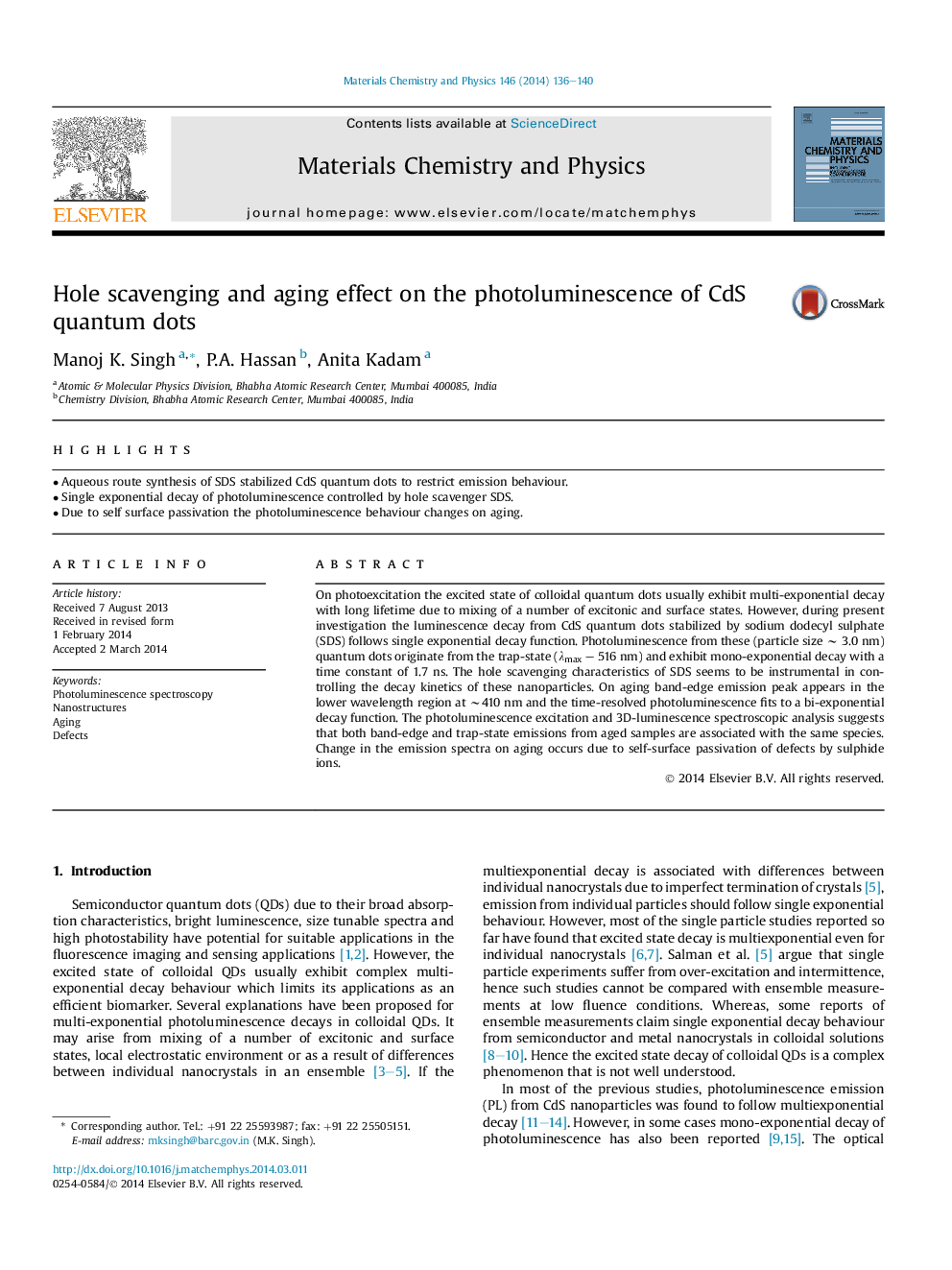| Article ID | Journal | Published Year | Pages | File Type |
|---|---|---|---|---|
| 1521790 | Materials Chemistry and Physics | 2014 | 5 Pages |
Abstract
On photoexcitation the excited state of colloidal quantum dots usually exhibit multi-exponential decay with long lifetime due to mixing of a number of excitonic and surface states. However, during present investigation the luminescence decay from CdS quantum dots stabilized by sodium dodecyl sulphate (SDS) follows single exponential decay function. Photoluminescence from these (particle size â¼Â 3.0 nm) quantum dots originate from the trap-state (λmax - 516 nm) and exhibit mono-exponential decay with a time constant of 1.7 ns. The hole scavenging characteristics of SDS seems to be instrumental in controlling the decay kinetics of these nanoparticles. On aging band-edge emission peak appears in the lower wavelength region at â¼410 nm and the time-resolved photoluminescence fits to a bi-exponential decay function. The photoluminescence excitation and 3D-luminescence spectroscopic analysis suggests that both band-edge and trap-state emissions from aged samples are associated with the same species. Change in the emission spectra on aging occurs due to self-surface passivation of defects by sulphide ions.
Related Topics
Physical Sciences and Engineering
Materials Science
Electronic, Optical and Magnetic Materials
Authors
Manoj K. Singh, P.A. Hassan, Anita Kadam,
